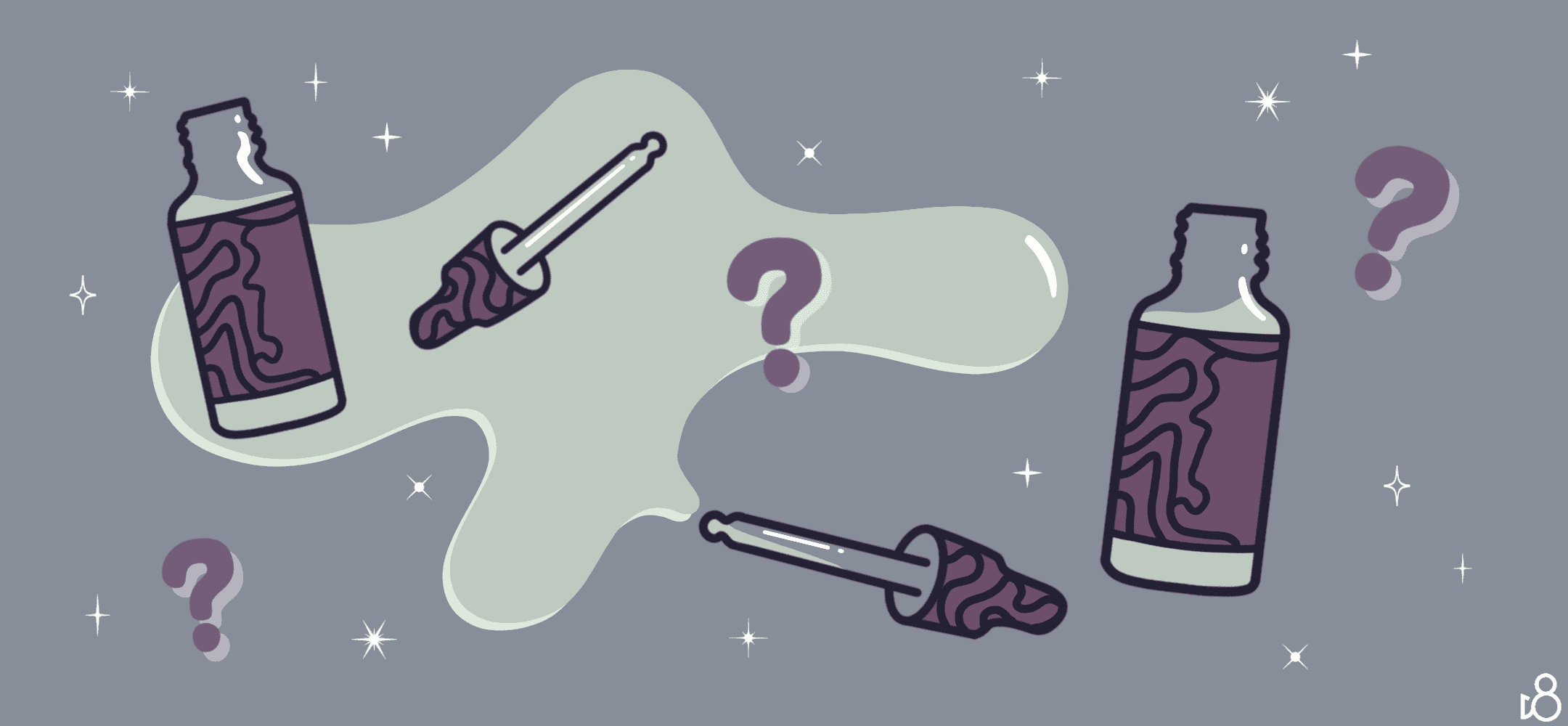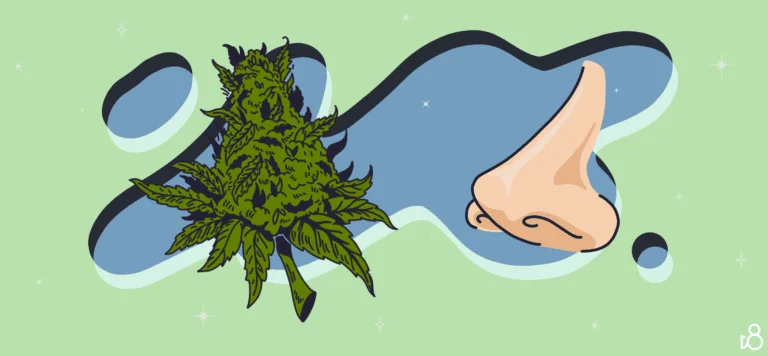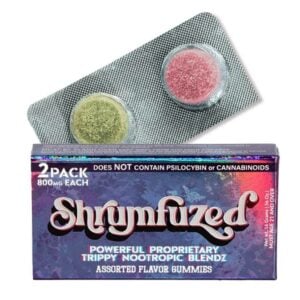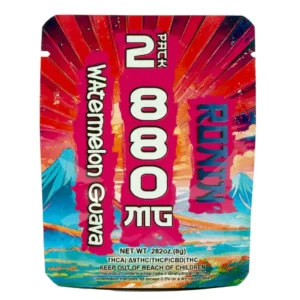Delta 8 Dosage Chart: Your Guide to Optimal Use
Getting the right amount of Delta 8 THC makes all the difference for a chill, easy-going experience. While CBD keeps things light without rocking your brain, Delta 8 THC is the wild cousin that promises an adventure you won’t forget. But beware! How much you enjoy this ride depends a lot on how much you can handle, how your body reacts, and how you decide to take it.
- Delta 8 THC Effects and Experience
- Understanding Delta 8 THC
- Delta 8 THC Consumption Methods
- Determining Your Delta 8 Dosage
- Optimizing Your Delta 8 Experience
- Safe Use and Best Practices
- Advanced Topics in Delta 8 Use
- Frequently Asked Questions
- What is the recommended starting dose for Delta 8 THC products?
- How does Delta 8 THC compare to Delta 9 THC in terms of potency?
- Can you overdose on Delta 8, and what are the signs?
- How long does it typically take for Delta 8 effects to manifest?
- Are 50 mg Delta 8 gummies considered a strong dose?
- What should you do if you consume too much Delta 8 THC?
Navigating the dosing guidelines for Delta 8 THC can be simplified with a dosage chart, which provides a recommended starting point for users new to this cannabinoid. The chart typically accounts for variations in individual response and presents a range of doses, measured in milligrams, tailored to the user’s experience level with cannabinoids. Starting with the lowest suggested dose and gradually increasing is advised to gauge your unique reaction and find the optimal amount that induces the desired effects.
As with any substance that affects the mind, it’s important to consume Delta 8 responsibly. Pay attention to the product’s potency and the ratio of Delta 8 to other cannabinoids like CBD, which can modulate the intensity of the psychoactive effects. Be aware that these recommendations are not one-size-fits-all, and what works for one person might not be the best choice for another. Your journey with Delta 8 should always put safety and well-being first, keeping in mind that less is often more when exploring the benefits and experiences it provides.
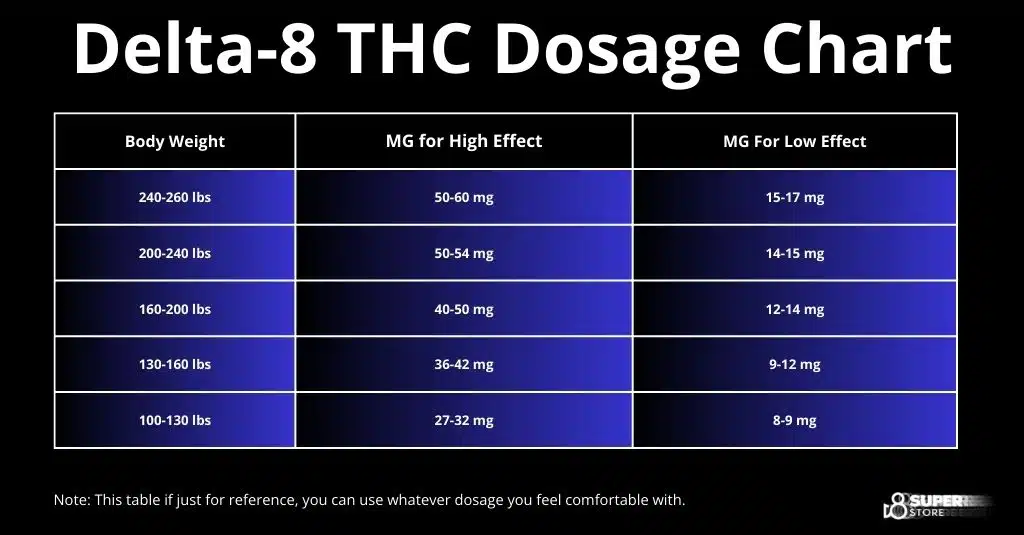
When exploring the world of cannabinoids, it’s crucial to understand Delta 8 THC’s unique properties and its distinctions from other compounds, notably Delta 9 THC. This section will guide you through the fundamental differences and characteristics to inform your knowledge on the subject.
Delta 8 vs. Delta 9 THC
Delta 8 THC and Delta 9 THC are closely related chemically, but have notable differences in their molecular structures leading to diverse effects. Delta 8 THC is often described as Delta 9 THC’s ‘nicer younger sibling’ due to its milder psychoactive impact. Studies suggest that users may adjust their dosage of Delta 8 THC to achieve desired effects, which tend to be less intense than those of Delta 9 THC.
Delta 8 THC and Cannabinoids
Cannabinoids are a group of compounds found in the cannabis plant. Delta 8 THC falls into this category and interacts with the body’s endocannabinoid system, but it is less prevalent in cannabis than Delta 9 THC. Users often seek out specific cannabinoids for their particular effects, and Delta 8 THC has gained popularity for its potential medical applications and its perceived knowledge of dosage and effects.
Psychoactive Properties
Delta 8 THC is psychoactive, but to a lesser degree than Delta 9 THC. The psychoactive properties lead to effects such as euphoria and relaxation, albeit typically with less potency. Your experience may vary, and starting with a low dosage is advisable as the effects of Delta 8 THC can differ based on individual body chemistry and tolerance levels.
Delta 8 Dosage Fundamentals
In understanding how to navigate Delta 8 THC dosages, it is crucial to consider factors such as body weight, age, and individual tolerance levels. The following sections will guide you through finding your optimal dosage, provide an overview of dosage charts, and discuss dosing variations based on weight and age.
Determining Optimal Dosage
Finding your ideal Delta 8 THC dosage is a personal journey, as it varies from person to person. Starting with a low dose and gradually increasing it is a safe approach to determine what works best for you. It is important to evaluate how your body reacts to small increments of Delta 8 THC before taking larger amounts.
Dosage Chart Overview
A Delta 8 THC Dosage Chart serves as a reference guide, offering a suggested range of dosages based on various factors. Here’s a simplified chart to consider:
| Body Weight | Low Dosage (Mild Effects) | Medium Dosage (Moderate Effects) | High Dosage (Strong Effects) |
|---|---|---|---|
| < 130 lbs | 5-15 mg | 15-45 mg | 45-75 mg |
| 130-230 lbs | 10-20 mg | 20-60 mg | 60-100 mg |
| > 230 lbs | 15-25 mg | 25-75 mg | 75-150 mg |
Dosing by Weight and Age
Your body weight and age are significant indicators that help tailor the dosage of Delta 8 THC to your needs. For instance, those who weigh more may require a higher milligram (mg) starting dose to achieve desired effects. However, for older adults, it’s advisable to start with a lower dosage due to potential changes in metabolism and body composition over time. Always consider the onset of tolerance, which refers to the need for a higher dosage over time to achieve the same effects as initially experienced.
Administration Methods
When considering Delta 8 THC products, it’s crucial to understand the different methods of administration as they can influence onset time, duration, and intensity of effects. Below, you’ll find details about popular ways to consume Delta 8, including edibles, tinctures, and inhalation methods.
Ingesting Delta 8 Edibles
Edibles, such as gummies and capsules, offer a discrete and convenient way to consume Delta 8 THC. When you ingest these products, the onset of effects can be delayed, typically taking anywhere from 30 minutes to 2 hours to be felt. The potency of each gummy or capsule is generally measured in milligrams, allowing you to manage your dosage effectively. However, Delta 8 infused into edibles like gummies can sometimes contain higher doses, as indicated in a study on the analysis of commercial Delta 8 THC products, so it’s vital to start with a lower dose to assess tolerance.
Sublingual and Oral Absorption
Sublingual administration involves placing Delta 8 oil or tinctures under your tongue. This method can lead to a quicker onset of effects compared to edibles, as the active ingredients are absorbed directly into your bloodstream through the mucous membranes in the mouth. For best results, hold the tincture or oil under your tongue for 30-60 seconds before swallowing. The dosage is typically measured in drops or milliliters, and you can easily adjust it to meet your specific needs.
Inhalation and Vaping
Inhalation through smoking or vaping Delta 8 provides the most rapid effects. Using a vape cartridge filled with Delta 8 oil is one of the most common methods of inhalation. The benefit of vaping is that it allows for near-immediate absorption of the compound into your bloodstream through your lungs, offering quick onset and the ability to control dosage with each inhale. The effects of inhalation are generally felt within minutes, but be aware that these methods involve vapor or smoke entering your lungs, which may not be suitable for everyone.
Average Bioavailability: 20-30%
Delta 8 oil, also sometimes called tincture, is taken under the tongue and absorbed through the blood vessels in your mouth. Oils allow for very precise dosing, as you can measure your dose down to the drop using the metered dropper that comes with most products.
Oils are also slightly more bioavailable than edibles and capsules due to their direct delivery of cannabinoids to the blood vessels.
What you’re sacrificing with oils is taste: you may not be a fan of the earthy, slightly bitter taste of hemp.
Here’s what you need to know about dosing delta 8 oil:
Generally, oils come with 1-milliliter droppers. Based on the strength of your product (we sell a 1500mg delta 8 oil), here’s how much delta 8 will be in each dropper of oil:
100 mg bottle = 3.3mg. delta 8 per 1 ml.
250mg bottle = 8.3mg. delta 8 per 1 ml.
500mg bottle = 16.7mg. delta 8 per 1 ml.
1000mg bottle = 33.3mg. delta 8 per 1 ml.
1500mg bottle = 50mg. delta 8 per 1 ml.
3000mg bottle = 100m. delta 8 per 1 ml.
5000mg bottle = 166.6mg delta 8 per 1 ml.
Your journey into the realm of Delta 8 THC products involves understanding the diversity of available options and the intricacies of their strength. Whether you prefer edibles or inhalants, each form offers a unique experience with Delta 8 THC.
Evaluating Different Forms
When considering Delta 8 THC products, you have a variety of forms to choose from. Gummies and capsules provide a convenient, pre-measured dose that’s easy to consume, with effects typically felt within 1 to 2 hours. Tinctures are versatile; a few drops under your tongue can produce effects more rapidly. Vape pens, cartridges, and e-liquids cater to those preferring inhalation, with effects manifesting almost immediately, while hemp flower can be used similarly to traditional cannabis flower. For a localized application, topicals are available, though their psychoactive effects are typically less pronounced than systemic products.
Potency and Strength Considerations
Understanding the potency of Delta 8 THC products is crucial for a safe and controlled experience. Edibles like gummies often come in dosages ranging from 10mg to 40mg per piece. With vapes and e-liquids, potency is measured in milligrams per milliliter, and the strength can vary widely. Tinctures allow for more precise dosing, with a typical dropper holding about 1ml of oil. On product labels, look for the total Delta 8 THC content in the package and divide by the number of servings to understand the dose per serving. Remember, starting with a lower dosage is advisable until you are familiar with its effects on your body.
Measuring and Calculating Dosage
Understanding the precise measurement and calculation of dosage is crucial when using Delta 8 products. Your goal is to achieve the desired effect while minimizing the risk of discomfort or adverse reactions.
Dosing Conversions and Measurements
When you’re determining your Delta 8 dosage, the first step is understanding the difference between milligrams (mg) and milliliters (ml). Milligrams measure the weight of the Delta 8 THC content, while milliliters gauge the volume of the liquid in which the THC is suspended. A dosage chart often uses mg to specify the potency of a serving.
- Regular Dose: A common starting point that may range from 10-25mg.
- Beginner Dose: Typically between 5-15mg, recommended for new users.
- Strong Dose: May be 25mg and above, suitable for experienced users.
Reading a Dosage Chart
A dosage chart is key to finding the right amount of Delta 8. These charts can help you translate the concentration (mg/ml) into a practical serving size. To read a dosage chart:
- Locate your desired dose in milligrams on the chart.
- Follow the chart to the corresponding volume (ml) for your dose.
Always ensure you’re reading from the correct chart provided for your specific Delta 8 product, as concentrations can vary.
Incremental Dosing Strategy
An incremental dosing strategy involves starting with a small dose and gradually increasing it in small increments. This approach allows you to find your optimal dose efficiently and safely.
- Begin with a beginner dose, especially if you are new to Delta 8.
- Measure your dose carefully, using the measurements provided on the dosage chart.
- Adjust in small increments, such as 5mg, allowing time between doses to assess effects.
Remember, the goal is to find the minimum effective dose that gives you the desired results without overconsumption.
Delta 8 THC Effects and Experience
When considering the use of Delta 8 THC, understanding its effects and experience is crucial for a safe and enjoyable outcome. Each user’s interaction with Delta 8 varies, but the chemical compound tends to provide a less intense high compared to Delta 9, with notable mental and physical effects.
Onset, Duration, and Intensity
Delta 8 THC’s effects typically manifest within 30 minutes to 2 hours post-ingestion and can last several hours depending on several factors such as the dosage, method of consumption, and individual tolerance. The intensity of the high is generally milder compared to Delta 9 THC, making it a potentially suitable option for those seeking a calmer experience.
- Smoking/Vaping: Onset within minutes, peak effects for 1-3 hours.
- Edibles: Onset within 1-2 hours, peak effects for up to 4-6 hours.
Expected Physical Effects
Users typically experience a range of physical effects such as dry mouth and red eyes, which are common with cannabinoid use. Some individuals report experiencing an increase in appetite, often referred to as the munchies, and sedation which may be useful for managing sleep disorders.
- Dry Mouth: Keep hydrated by drinking water.
- Red Eyes: Use eye drops if necessary.
- Munchies: Have healthy snacks ready.
- Sedation: Plan for rest if you become drowsy.
Understanding Delta 8 THC
Delta 8 THC has risen in popularity for its unique psychoactive properties and therapeutic potential. Before diving into its nuances, it’s crucial to grasp its chemistry, legal landscape, and how it compares to other cannabinoids.
Mental and Emotional Impact
Delta 8 THC can affect your mental state, altering your sense of anxiety, energy levels, and focus. While it may promote relaxation and calm, excess dosage could lead to unwanted anxiety. It typically provides a gentler boost to mood and cognition compared to its more potent counterpart.
- Anxiety: Start with a low dose to reduce risk.
- Energy: Some report increased energy, others may feel more relaxed.
- Focus: Doses may enhance or distract from focus, so adjust accordingly.
When exploring the use of Delta-8, it’s important to consider safety and be aware of possible side effects. This will help you make informed decisions and use Delta-8 responsibly.
Recognizing Adverse Effects
Adverse effects from Delta-8 can vary greatly depending on the dose and individual sensitivity. Common side effects include but are not limited to:
- Dry mouth
- Red eyes
- Increased appetite
- Short-term memory impairment
You should be cautious and monitor for these adverse effects, especially if you’re new to using Delta-8.
Potential for Overdose and Toxicity
Although an overdose of Delta-8 is rare, taking an excessively high dose can lead to toxic effects. Signs of overdose might include:
- Anxiety
- Paranoia
- Dizziness
If you suspect you’ve taken too much, it’s crucial to seek medical attention immediately.
Interaction with Medications
Delta-8 can interact with certain medications, potentially altering their effects. Before using Delta-8, you should discuss it with your healthcare provider, especially if you’re taking:
- Blood thinners
- Anti-seizure medications
- Any form of medication that carries a risk of interaction with cannabinoids
Always use Delta-8 with caution to avoid unintended interactions with other medications or lab tests.
Chemical Profile and Properties
Delta 8 THC is a cannabinoid similar to Delta 9 THC, the main psychoactive compound in cannabis. Both share a chemical structure but with a different arrangement of atoms, which accounts for Delta 8’s milder psychoactive effect. Delta 8 is known to elicit feelings of relaxation, focus, and energy without the more intense high associated with Delta 9 THC.
Legal Status and Regulations
Navigating the legal status of cannabinoids can be complex. While Delta 9 THC is federally illegal, Delta 8 resides in a gray area due to its derivation from legal hemp. However, states have their own regulations; for example, Delta 9 THC’s legalities are subject to state law in places like Arizona, California, and Alabama, among others.
Comparing Delta 8 and Delta 9 THC
Both Delta 8 and Delta 9 THC can cause psychoactive effects and provide relief from pain, yet Delta 9 THC is typically more potent. This lower potency means Delta 8’s side effects like anxiety and paranoia are less likely, making it a favorable option for users seeking a more manageable experience.
Delta 8 vs CBD: Differences and Similarities
CBD is non-psychoactive, distinguishing itself from Delta 8 THC. While CBD is widely renowned for aiding with sleep and anxiety, without eliciting a high, Delta 8 offers a middle ground, combining a mild high with therapeutic benefits.
Potential Effects and Benefits
Delta 8 THC is sought for both its psychoactive and therapeutic effects. Users report benefits like improved appetite, pain relief, and help with sleep disorders. Its capacity to grant an uplift in mood and energy levels also makes it attractive for therapeutic use.
Common Side Effects
Consuming Delta 8 THC can lead to side effects similar to those of other cannabinoids. These include dry mouth, red eyes, and the munchies. While generally considered to be a safer alternative with fewer side effects, it should still be used responsibly and in moderation.
Delta 8 THC Consumption Methods
When experimenting with Delta 8 THC, understanding the various methods of consumption can greatly enhance your experience. Different methods can affect potency, duration, and onset of effects.
Inhalation Techniques
Inhaling Delta 8 THC through smoke or vapor offers a swift onset of effects. I prefer using vape pens or cartridges filled with concentrated Delta 8 oil for a cleaner experience. Jordan from Know Your Vape adds that “Hemp flower can also be smoked, but vaping reduces the inhalation of byproducts produced by combustion. Here’s a simple breakdown:
- Vape Pens/Cartridges: Convenient and portable, offer precise doses.
- Smoking Hemp Flower: Traditional method, combustion involved.
Oral Ingestion
Gummies and edibles infused with Delta 8 are popular for their ease of use and controlled dosing. I often recommend starting with a small dose, like half a gummy, to assess tolerance. Capsules are another discreet option, providing consistent doses without the need for measuring.
- Delta 8 Gummies: Pre-measured; onset takes 1-2 hours.
- Capsules: Easy to swallow; effects similar to gummies.
Topical Application
For localized relief, topicals like lotions or balms can be applied directly to the skin. Transdermal products are designed to penetrate deeper, potentially offering systemic effects. Quality and concentration of Delta 8 in topicals vary, so it’s important to choose products wisely.
- Topicals: Creams and lotions for localized application.
- Transdermal: Patches delivering Delta 8 directly into the bloodstream.
Sublingual Method
Sublingual application involves placing tincture drops under the tongue for quick absorption into the bloodstream. My own routine often includes utilizing a high-quality Delta 8 THC tincture for a more immediate effect, holding the oil under the tongue for 30-60 seconds before swallowing.
- Tinctures: Drops placed under the tongue; typically felt within 15-30 minutes.
Unique Product Types
Innovative Delta 8 products continually emerge, such as nasal sprays and breath strips. Each product type provides a distinctive method of consumption that caters to individual preferences and needs.
- Nasal Sprays: Fast-acting, direct nasal delivery.
- Breath Strips: Convenient, dissolve in the mouth for quick absorption.
By considering these consumption methods and the specifics of each, I can choose a method that aligns with my desired effects and convenience.
Determining Your Delta 8 Dosage
| Weight | Mild Effects | Heavy Effects |
|---|---|---|
| 80 lbs (35 kg) | 5 mg | 15 mg |
| 100 lbs (45 kg) | 6 mg | 20 mg |
| 120 lbs (55 kg) | 8 mg | 27 mg |
| 140 lbs (65 kg) | 9 mg | 32 mg |
| 160 lbs (72 kg) | 10 mg | 36 mg |
| 180 lbs (82 kg) | 12 mg | 40 mg |
| 200 lbs (90 kg) | 13 mg | 45 mg |
| 220 lbs (100 kg) | 14 mg | 50 mg |
| 240 lbs (108 kg) | 15 mg | 54 mg |
| 260 lbs (118 kg) | 17 mg | 60 mg |
When considering incorporating Delta 8 THC into your routine, it’s crucial to identify the correct dosage that fits your specific needs and circumstances.
Delta 8 Dosage Chart Explained
A Delta 8 dosage chart serves as a reference that typically suggests doses in milligrams (mg) related to the desired effect level. For example, 5-15 mg might be recommended for a beginner looking for a mild experience. It’s essential to understand that such charts provide a generalized starting point, since every individual’s response can vary.
Influencing Factors on Dosage
Several factors influence optimal Delta 8 THC dosage. These include age, body weight, and metabolism. A smaller individual may require less Delta 8 to achieve the same effect as someone larger in body mass. Similarly, someone with a faster metabolism may process Delta 8 more quickly.
Tolerance and Potency Considerations
Your tolerance level to cannabis products plays a significant role in dosing. Frequent users may need higher doses to achieve the desired high or therapeutic effects due to an increased tolerance. It is also important to consider the potency of the specific Delta 8 product being used.
Recreational vs Medicinal Dosing
Recreational dosing aims for enjoyment and might skew higher for a more intense experience. In contrast, medicinal dosing focuses on the therapeutic benefits, potentially resulting in a lower dosage to minimize psychoactivity while relieving symptoms.
Starting Doses and Considerations
For those new to Delta 8, starting with a beginner dose — such as a 5-10 mg serving — is advisable. This baseline dose helps you gauge how Delta 8 affects you without overwhelming your system. Adjustments can then be made from this point.
Titration: Finding the Right Amount
Incremental adjustments, or titration, involve increasing your dose in small, controlled increments. This method helps find the balance that gives you the benefits you desire without excessive side effects. A dose increment might be as little as 1-2 mg at a time.
Handling Overdose and Adverse Effects
Should you experience overdose symptoms like anxiety or discomfort, it’s important to stay calm and remember that these feelings will pass. Taking too much can lead to adverse effects, so knowing how to recognize and manage them is crucial. If you’re starting out, a 10mg gummy edible can offer a controlled introduction to Delta 8 THC’s effects.
Optimizing Your Delta 8 Experience
When looking to enhance your Delta 8 experience, understanding the nuances of how it interacts with your body can be pivotal. Considering factors like bioavailability and your individual lifestyle will aid in fine-tuning dosage and maximizing benefits.
Bioavailability and Absorption
Bioavailability is a key factor determining how much Delta 8 actually enters your bloodstream. I recognize that methods such as vaporizing Delta 8 can significantly increase its bioavailability compared to other forms. It’s critical to know that the mode of ingestion affects not just the intensity but also the speed of absorption.
Onset and Duration of Effects
The onset of effects can vary based on the form of Delta 8 consumed. For instance, edibles can take longer to kick in compared to inhalation methods. Similarly, the duration of effects can range from a few hours for vapors to much longer for oral products. I’ve learned that knowing the time frame can help plan for and maintain a consistent experience.
Various Strengths and Concentrations
Delta 8 products come in different strengths and potencies, which can be a bit overwhelming. It’s important to start with lower dose increments and gradually increase to find the sweet spot. Factors like weight, metabolism, and tolerance can influence how much one should consume, and I advise to always err on the side of caution.
Lifestyle and Frequency of Use
Your lifestyle and frequency of Delta 8 use should shape your approach to dosing. Whether you are using Delta 8 casually or incorporating it into a daily routine affects your tolerance and how your body metabolizes it. I ensure that my usage aligns with my daily activities and responsibilities.
Maximizing Therapeutic Outcomes
For those looking to use Delta 8 for its therapeutic benefits, understanding its interaction with any other medications you might be taking is essential. I find balanced dosing important for anxiety relief, and to experience the desired effects, it’s crucial to monitor and adjust the dosage in response to your body’s feedback.
In my experience, optimizing your Delta 8 experience requires thoughtful consideration of how you consume it, acknowledging the individual characteristics that influence its effects, and making informed decisions to achieve the desired outcome.
Safe Use and Best Practices
When it comes to Delta 8 THC, prioritizing safe use and adherence to best practices is essential. I’ll guide you through the critical aspects of quality control, responsible use, lifestyle integration, and recognizing premium Delta 8 products to ensure a beneficial experience.
Quality Control and Lab Testing
Quality control begins with lab testing. I always look for products that have been rigorously tested in a reputable lab for purity and potency. A complete lab analysis should include screening for contaminants such as pesticides, heavy metals, and residual solvents. It’s crucial to verify that the Delta 8 THC content matches the listed dosage on the product label to ensure you’re taking a regular dose and not inadvertently consuming a strong dose.
Responsible Use Guidelines
When using Delta 8 THC products—whether it’s a delta-8 thc vape pen, tinctures, or edibles—I follow responsible use guidelines. For new users, starting with a low serving size and gradually increasing is prudent until you find your optimal dosage. For instance, a regular serving might be 10-25 mg of Delta 8 THC, while a strong dose may range from 25-50 mg. Always consider your own tolerance and body’s response.
Delta 8 Integration into Lifestyle
Integrating Delta 8 into your lifestyle requires a balanced approach. I find that Delta 8 can offer therapeutic benefits such as relaxation or mild euphoria, which may complement activities like meditation or creative endeavors. However, it is essential to use it in a manner that supports overall well-being without leading to dependency or interfering with day-to-day responsibilities.
Recognizing Quality Delta 8 Products
Not all Delta 8 THC products are created equal. I ensure I’m choosing quality products by checking for clear labeling, including the dosage and ingredient list, and sourcing from companies that provide third-party lab testing results. High-quality products like Delta 8 THC tincture or edibles should be consistent in their formulation and effect, providing peace of mind along with their intended benefits.
Advanced Topics in Delta 8 Use
As we explore Delta 8 THC, a nuanced aspect is the influence of terpenes, which play a significant role in the effects experienced.
The Role of Terpenes in Delta 8 THC
Terpenes, the aromatic compounds found in cannabis, are pivotal in modulating the effects of Delta 8 THC. My investigation into terpenes reveals that they are more than just scent molecules: they possess the ability to interact with cannabinoids to enhance or modify the therapeutic and psychoactive properties of Delta 8.
When examining the dosage and effects of Delta 8 THC, understanding the synergy between terpenes and cannabinoids — known as the entourage effect — is crucial. For example, a terpene like Myrcene is believed to potentially increase the sedative effects of Delta 8 THC, which might be desirable for users seeking relaxation or aid with sleep.
On the other hand, a terpene such as Limonene might produce more uplifting effects, which could be beneficial for users looking for an energy boost. The presence of these terpenes in a Delta 8 product can therefore significantly dictate one’s experience.
For those curious about the distinctions between different THC analogs, it’s interesting to note discussions around compounds like Delta 10, often brought up in comparison to Delta 8, concerning their natural or synthetic origin. While terpenes influence Delta 8 effects, the discussion on the nature of Delta 10 highlights the complexities of cannabinoid science.
In crafting a Delta 8 dosage chart, it is important to consider the terpene profile of the products being used. I recommend noting the concentration of specific terpenes and documenting their effects alongside the dosages of Delta 8 THC. This approach can aid users in tailoring their experience according to their desired outcomes.
Frequently Asked Questions
In this section, I’ll address some of the common inquiries regarding Delta 8 THC dosage, helping you make informed decisions about your usage.
What is the recommended starting dose for Delta 8 THC products?
For Delta 8 THC, the recommended starting dose tends to be around 10-20 milligrams per use. It’s important for individuals to begin with a lower dose to gauge their tolerance before increasing the amount gradually.
How does Delta 8 THC compare to Delta 9 THC in terms of potency?
Delta 8 THC is often reported to be less potent than Delta 9 THC. Users typically experience milder effects, which can be desirable for those seeking less intense psychoactive reactions.
Can you overdose on Delta 8, and what are the signs?
While a fatal overdose on Delta 8 THC is unlikely, overconsumption can lead to uncomfortable symptoms such as anxiety, paranoia, dizziness, and dry mouth. Knowing your limits and starting with low dosages is key to avoiding these adverse effects.
How long does it typically take for Delta 8 effects to manifest?
The onset time for Delta 8 effects can vary based on the method of consumption. If inhaled, effects can begin within minutes, while edibles can take up to two hours before the effects are felt.
Are 50 mg Delta 8 gummies considered a strong dose?
Yes, a 50 mg Delta 8 gummy is considered a strong dose, especially for individuals with lower tolerance levels. It’s advisable to use such a high dosage only if you are familiar with the effects and your personal tolerance to Delta 8 THC.
What should you do if you consume too much Delta 8 THC?
If you find that you have taken too much Delta 8 THC, the best course of action is to remain calm, hydrate, and rest in a safe, comfortable environment. The effects will diminish with time, and seeking support from a trusted individual is also a wise step.

